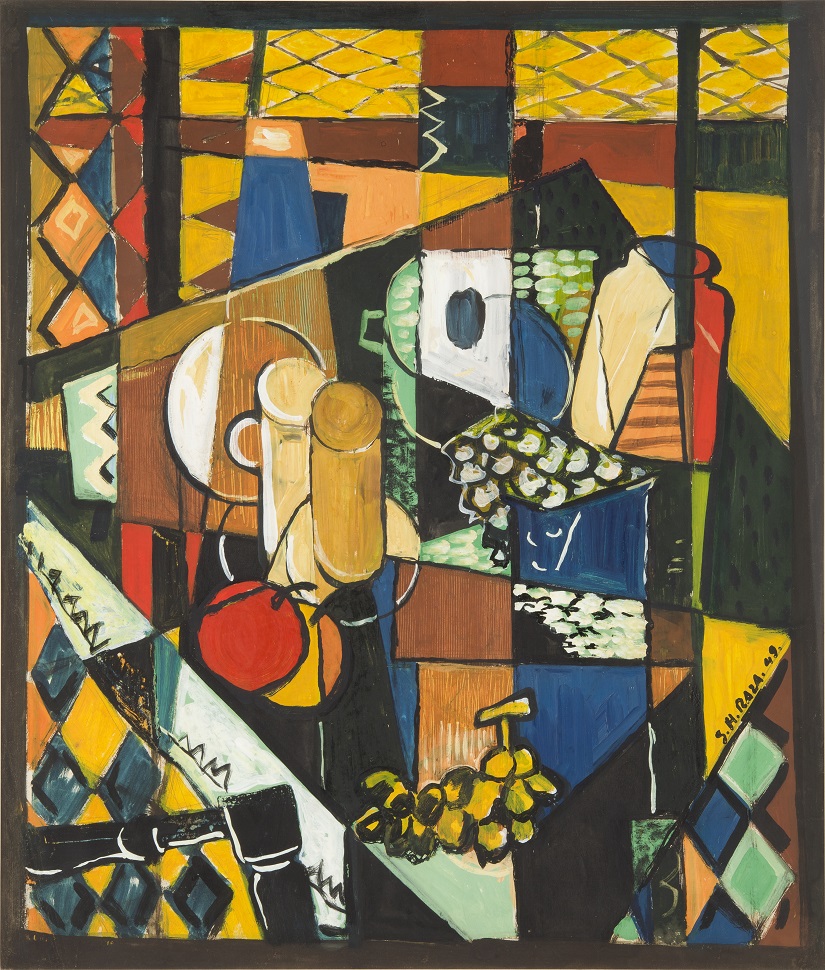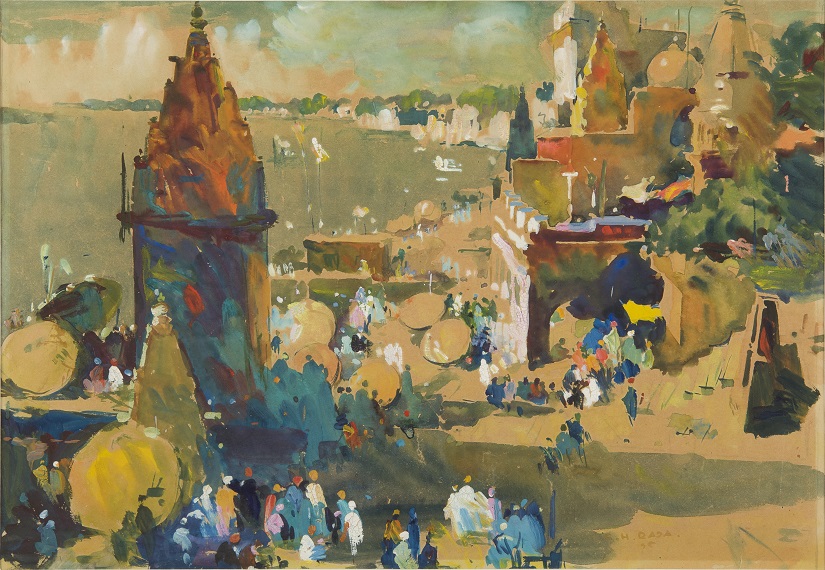Abhishek Kumar
February 22, ON THIS DAY
Everyone sees for himself, the artist also sees for himself. Others see where ideas coincide, or whether they agree or disagree. There is no binding, no forcing of things. It has to be a free association of ideas.
S.H. Raza
Syed Haider Raza, popularly known as S.H. Raza, was one of the most prominent Indian painters of the 20th century. His works are characterized by vibrant colours, geometric shapes, and deep spiritual and philosophical significance. He developed a unique style that was influenced by his exposure to different art traditions and philosophies throughout his life. His works are often described as meditative and contemplative, with a focus on themes related to nature, spirituality, and the divine.
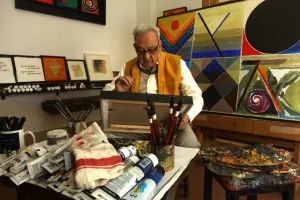
One of the leading figures of the modern Indian art movement Raza was born in 1922 in Babaria, a small village in Madhya Pradesh, India, and studied at the Sir J.J. School of Art in Mumbai before moving to Paris in 1950 to further his artistic education. In the 1950s, Raza began to develop his signature style, which was characterized by the use of geometric shapes, strong lines, and vibrant colours. He was particularly interested in the concept of the “bindu” (dot), a symbol of the point of creation in Hindu philosophy, which he explored in many of his works.
Raza’s art was deeply transformative, both for the artist himself and for the world of Indian art. Raza’s early works were influenced by his childhood memories of the Indian landscape, but his experiences in France and his exposure to Western art led him to explore new forms of expression. He incorporated elements of Western art into his own work, creating a unique style that blended different artistic traditions. He became a founding member of the Progressive Artists’ Group, a collective of Indian artists who sought to break free from the traditional styles and techniques of Indian art and embrace modernism.
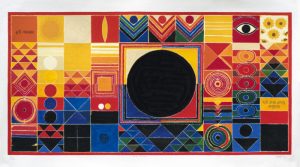
One of Raza’s most well-known works is “Bindu” (1980), a painting that features a large red dot at the center of a white canvas. The bindu represents the source of all creation and is a powerful symbol in Hindu philosophy. In Raza’s hands, the bindu becomes a meditative point of focus, a symbol of the infinite and the eternal. Raza explored this theme throughout his career, creating multiple works that feature the bindu in different colours and sizes.
Raza’s art also had a transformative effect on the world of Indian art. He was a founding member of the Progressive Artists’ Group, a collective of Indian artists who sought to break free from the traditional styles and techniques of Indian art and embrace modernism. Through his work and his influence, Raza helped to transform Indian art, bringing it into dialogue with the wider world of modern art. His use of vivid colours, geometric shapes, and spiritual themes have become hallmarks of contemporary Indian art.
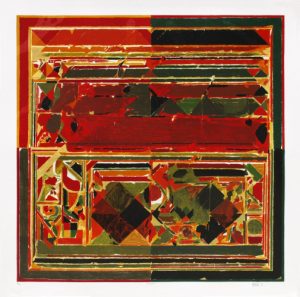
In addition to his artistic contributions, Raza was also a deeply spiritual and philosophical thinker. His art was a reflection of his personal journey of self-discovery and his search for spiritual transcendence. Raza once said that “art is not the end result, but the beginning of a dialogue.” For him, art was a way of opening up new possibilities and new ways of thinking about the world. He wrote extensively about art, spirituality, and philosophy, and his writings often reflected his personal journey of self-discovery. He was particularly interested in the concept of “prakriti” (nature) and “purusha” (the self), which he explored in his paintings and writings. He believed that art was a way of opening up new possibilities and new ways of thinking about the world.
Throughout his career, Raza received numerous awards and honours, including the Padma Shri, Padma Bhushan, and Padma Vibhushan, some of India’s highest civilian honours. He passed away in 2016 at the age of 94, but his legacy as one of India’s greatest modern artists lives on. Today, his works are housed in museums and collections around the world and continue to inspire and influence artists and art lovers alike. S.H. Raza’s art was transformative in multiple ways. His works represented a powerful exploration of spirituality and philosophy, and helped to transform Indian art and bring it into the modern era. His legacy continues to influence artists and thinkers around the world. His legacy is one of exploration, experimentation, and a deep commitment to exploring the relationship between art and spirituality.
